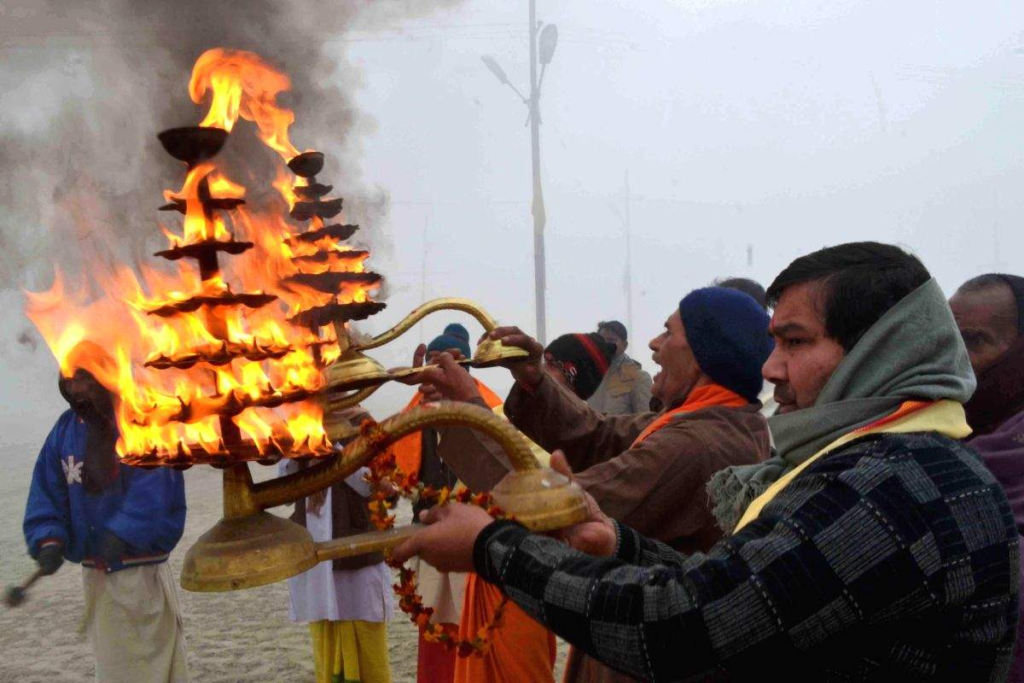Makar Sankranti, one of India’s most auspicious festivals, marks the transition of the Sun into the zodiac sign of Capricorn (Makara) and the arrival of longer, warmer days. Observed annually on January 14 or 15, this festival celebrates the end of winter, the harvest season, and the start of Uttarayana (the Sun’s northward journey). Its universal appeal lies in its spiritual significance, regional variations, and cultural traditions.
Why Makar Sankranti is Celebrated
The significance of Makar Sankranti goes beyond seasonal change.
- Spiritual Renewal: It marks a time for gratitude to nature and the Sun God for providing a bountiful harvest.
- Cultural Harmony: Different states in India celebrate this festival with unique names and customs, showcasing the country’s diversity.
- Charity and Kindness: It’s considered highly auspicious to donate food, clothes, and money during this time.
Regional Variations of Makar Sankranti
- Pongal in Tamil Nadu
- A four-day celebration involving cooking sweet rice (pongal) and worshiping cattle.
- Lohri in Punjab
- Celebrated a day before Makar Sankranti with bonfires, dancing, and traditional songs.
- Uttarayan in Gujarat
- Famous for its grand kite festivals, where the skies are dotted with colorful kites.
- Magh Bihu in Assam
- Includes feasting on rice cakes and preparing traditional Assamese dishes.
How Makar Sankranti is Celebrated
- Kite Flying: A signature activity in states like Gujarat, Rajasthan, and Maharashtra, symbolizing freedom and joy.
- Special Foods: Traditional delicacies like sesame laddoos (tilgul), pongal, and chikkis are prepared and shared.
- Holy Dips: Pilgrims take dips in sacred rivers like the Ganga, Yamuna, and Godavari to cleanse themselves of sins.
- Bonfires: In northern states, families gather around bonfires to mark the end of the harvest season.
Scientific and Astrological Importance
Makar Sankranti is tied to the solar calendar, unlike most Indian festivals based on the lunar calendar.
- It signifies the Sun’s transit into Capricorn, marking the start of longer days.
- This period, called Uttarayana, is considered highly auspicious in Hindu mythology.
Makar Sankranti Around the World
Indian communities worldwide celebrate Makar Sankranti with great enthusiasm.
- In the United States, cultural associations organize kite-flying festivals, traditional food fairs, and religious ceremonies.
- In the UK and Canada, temples host special prayers and community feasts, bringing people together.
FAQs About Makar Sankranti
Q1: Why is Makar Sankranti considered a harvest festival?
A: It marks the end of the winter harvest and the beginning of the new agricultural season, with farmers thanking the Sun God for prosperity.
Q2: What are the main foods prepared during Makar Sankranti?
A: Traditional dishes include sesame laddoos, sweet pongal, and rice chikkis, symbolizing warmth and unity.
Q3: Is kite flying unique to India during Makar Sankranti?
A: While kite flying is most popular in Gujarat and Rajasthan, Indian communities abroad also embrace this tradition.
Q4: What makes Uttarayana special in Hindu mythology?
A: Uttarayana is considered the day of gods, marking a favorable time for spiritual practices, weddings, and other auspicious events.
Q5: Can non-Hindus celebrate Makar Sankranti?
A: Absolutely! The festival’s themes of gratitude, joy, and community make it a universal celebration.
Conclusion
Makar Sankranti is not just a festival; it’s a cultural phenomenon that unites people in gratitude, joy, and hope. From flying kites to preparing traditional sweets, its customs reflect India’s rich heritage and deep spiritual roots. Whether in India or abroad, the festival continues to inspire unity and celebration.

